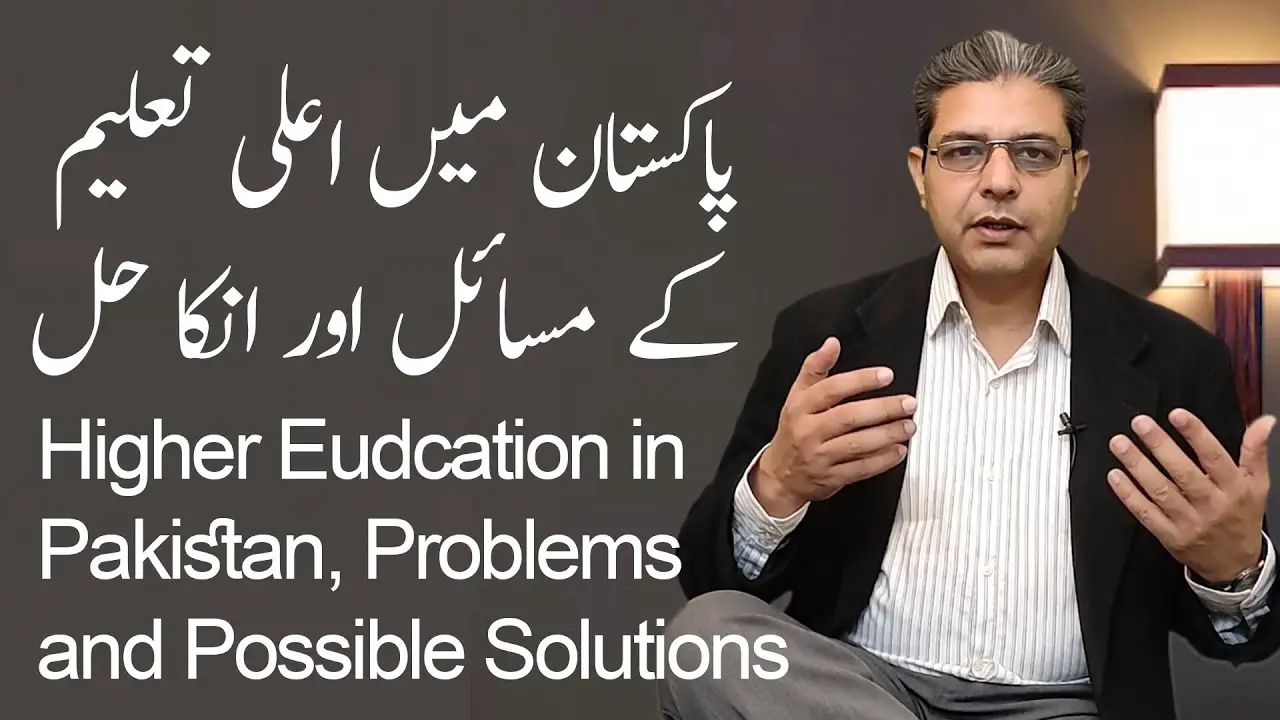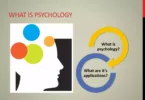Education in Pakistan Challenges and Opportunities
Introduction to the current state of education in Pakistan
Education is vital to social and economic growth and a big part of a country’s progress. Pakistan’s education system has a lot of problems because it needs to be given the attention it needs. There are many problems with Pakistan’s education system, such as not enough money, low literacy rates, differences between boys and girls, and poor quality.
The state of education in Pakistan is a cause for concern. According to the United Nations Educational, Scientific, and Cultural Organization (UNESCO), Pakistan has the second-highest number of out-of-school children in the world, with about 22.8 million children not receiving an education. Literacy rates in Pakistan are low, with only 58% of the adult population being literate. In education, there is also a big difference between men and women in terms of how many people can read, how many people enroll in school, and how many people finish school.
The COVID-19 pandemic has made the problems the Pakistani education system already had even worse. With schools closed because of lockdowns and social distancing measures, there has been a shift toward online learning. However, implementing online knowledge in a country with limited internet access has been challenging, and the potential long-term effects of disrupted education are a cause for concern.
Despite these challenges, there are also opportunities for improvement in education in Pakistan. Expansion of access to education, improved teacher training and development, investing in education infrastructure and resources, addressing gender disparities in education, encouraging innovation in education, and reforms to education policy are some of the critical opportunities for improvement in education in Pakistan.
The role of the government in improving education in Pakistan is crucial. The government must put money into education, change policies, work with international groups and donors, and ensure education is accountable and open.
In this blog post, we will explore the challenges faced by the education system in Pakistan, the impact of COVID-19 on education, opportunities for improvement, and the role of the government in improving education. This blog post will add to the ongoing discussion about education in Pakistan and encourage people to take action to improve the country’s education system.
Challenges faced by the education system in Pakistan
Pakistan’s education system has to deal with many problems that have slowed its growth and development. Some of the most significant issues with the education system in Pakistan are that it doesn’t have enough money and resources; not enough people can read and write; there are differences between boys and girls when it comes to education; the quality of education isn’t excellent; teachers don’t get enough training and development; and the government messes with education policy. Pakistan’s education system only gets a small portion of the country’s budget. Because of this, schools need basic things like enough classrooms, textbooks, and trained teachers.
Pakistan’s education system has many problems because it needs more money and resources. Pakistan’s education system only gets a small part of the country’s budget, so schools need basic things like enough classrooms, books, and trained teachers. There need to be more qualified teachers, and the hired often need more training or development to teach their students well. Students.
Pakistan’s education system also has to deal with a big problem: an insufficient number of people can read and write. According to UNESCO, Pakistan has one of the lowest literacy rates in the world, with only 58% of the adult population being literate. This low literacy rate results from various factors, such as poverty, lack of access to education, and inadequate education infrastructure.
Gender disparities in education are also a significant issue in Pakistan. Many things make it hard for girls to go to school, such as cultural and social norms, poverty, and lack of access This causes a big. This causes a big difference between men and women in how many people can read, how many people go to school, and how many men go to school. People good school. Peopleonal attainment.
Another big problem for the education system in Pakistan is that the quality of education could be better. The education system needs the necessary infrastructure, resources, and trained teachers to educate students. Because of this, many students get a poor education that doesn’t give them the skills and knowledge they need for their future careers.
The education system in Pakistan also needs help with how teachers are trained and developed. Teachers sometimes need training and professional development to teach their students well, making it hard for them to learn.
The Pakistani education system also has to deal with the fact that politics sometimes get in the way of education policy. Education policy is often made based on politics rather than the needs of students and teachers. This leads to better-made approaches that can’t solve the real problems in the education system. Let us dive into depth about these issues.
Lack of funding and resources
Education is a fundamental human right and a crucial aspect of development. It is the cornerstone of progress and prosperity, and it plays a vital role in the socioeconomic development of a country. However, Pakistan’s education system faces several challenges because of a need for more funding and resources.
Reasons for Lack of Funding and Resources in Pakistan’s Education System:
- Limited Government Spending: One of the primary reasons for the lack of funding in Pakistan’s education system is the need for more government spending. The government’s spending on education is only 2.8% of the country’s GDP, significantly lower than other developing countries.
- Political Instability: Political instability in the country has also hindered the development of the education system. Because of political unrest, the government cannot focus on long-term education plans, and the education system needs to be addressed.
- Corruption: Corruption is a pervasive problem in Pakistan and affects the education system. Corruption in the education sector has led to the mismanagement of funds and resources, worsening the situation.
- Lack of Private Investment: Private investment in the education sector is also low in Pakistan. This is primarily because of the need for a conducive environment for private investment and the absence of proper regulations.
Other Challenges Faced by Pakistan’s Education System, Due to Lack of Funding and Resources are:
- Poor Infrastructure: Lack of funding and resources has resulted in poor infrastructure in schools and colleges. Many schools need more basic facilities such as clean drinking water, toilets, and electricity.
- Shortage of Trained Teachers: because of the lack of funding, many schools in Pakistan need more trained teachers. This has resulted in overcrowded classrooms, and the quality of education has suffered.
- Outdated Curriculum: The education system in Pakistan has yet to keep up with the changing times. The curriculum needs to be updated and prepare students for the demands of the modern world.
- Low Enrollment and High Dropout Rates: because of the poor quality of education and the lack of resources, only a few children in Pakistan are enrolled, and those who do enroll often drop out before completing their education.
- Gender Disparities: Pakistan has a significant gender gap in education. Girls are often not allowed to attend school because of cultural and social norms, further exacerbating illiteracy and lack of education.
Pakistan’s education system faces several problems because it needs more money and resources. The government needs to spend more on education and deal with the issues that lead to corruption and political unrest. Private investment in the education sector should also be encouraged, and they must update the education system to meet the demands of the modern world. By addressing these issues, Pakistan can improve education quality for citizens with all opportunities.
Impact of COVID-19 on education in Pakistan
The COVID-19 pandemic has greatly affected education systems worldwide, including in Pakistan. In March 2020, the government of Pakistan had to shut down all educational institutions to curb the spread of the virus, resulting in a massive loss of instructional time for millions of students. The government and schools have been looking into online learning options to ensure the pandemic doesn’t hurt education too much. Butt putting online learning into practice in a country like Pakistan is challenging because of limited internet access and other social and economic factors. In this article, we will explore the impact of COVID-19 on education in Pakistan, the shift to online learning, the challenges of implementing online learning, and the potential long-term effects of disrupted education.
Shift to Online Learning
Because of the pandemic, schools in Pakistan have had to switch to online learning so that students can still get an education during the lockdown. Online learning has become a meaningful way to deal with the problems caused by the pandemic. The government and educational institutions have been using various online learning platforms, such as learning management systems (LMS), online classrooms, video conferencing tools, and educational websites, to provide remote education to students. In addition, several private institutions have also started offering online learning programs.
Challenges in Implementing Online Learning in a Country with Limited Internet Access
The switch to online learning has made it possible for students to keep learning, but it has been challenging. Access to the Internet is one of the biggest problems with online education in Pakistan. According to the Pakistan Telecommunication Authority, only 35% of the population has access to the internet. This makes it hard to use the internet for online learning, especially in rural areas where the internet infrastructure needs to be improved.
The lack of digital literacy among teachers and students is another challenge. Many teachers need to become more familiar with online teaching methods, and students need to be better equipped to learn through online platforms. This lack of digital literacy makes it hard for teachers to provide good online education and makes it hard for students to learn well.
Another challenge is the socioeconomic status of students. Many students in Pakistan come from low-income families and need access to technology and devices, such as laptops, tablets, or smartphones, to participate in online learning. Many students need a good place to study at home, which affects their learning even more.
Potential Long-Term Effects of Disrupted Education
The COVID-19 pandemic has disrupted Pakistan’s education system, and its long-term effects could be significant. One of the major concerns is the loss of instructional time, which may cause a learning gap and affect academic performance.







[…] on traditional ways of teaching, can give students a strong base for success in many areas of life. Educators can help ensure their students are ready for the challenges of the modern world by using Perennialism in the […]
[…] instruction in special education also promotes opportunities for repetition and practice. Students with special needs often benefit from additional practice and […]
[…] history, mathematics, and science. This can help to ensure that students are well-prepared for the challenges of higher education and the workforce. It can also help students to develop a well-rounded perspective on the world and […]
[…] of Realism that emphasizes the value of critical thinking and analysis in comprehending the world. Education should emphasize necessary thinking skills development and encourage students to question … existing beliefs. Required Realism curriculum frequently includes subjects such as philosophy, […]
[…] Spencer believed education was preparation and training for a complete life, while Bernard Shaw believed education sh… generations. T.P. Nunn believed education should focus on developing an individual’s own […]
[…] student behavior while also aiming to prevent such disruptions. It is undeniably one of the most challenging aspects for educators, intricately tied to motivation, discipline, and respect. While many teachers acknowledge that […]
[…] plays a significant role in teaching techniques by enhancing learning experiences and expanding educational opportunities. Here are some key parts of technology in […]
[…] education, and social-emotional learning. While integrating citizenship and social skills into education can be challenging, it is a worthwhile strategy that can benefit both students and society in many […]
[…] outweigh the drawbacks. With careful planning, professional development, and ongoing reflection, educators can navigate the challenges and create a supportive and engaging learning environment that meets the diverse needs of their […]
[…] is essential to enhance collaboration skills, teaching strategies, and subject knowledge. Finding opportunities for joint professional development can be challenging, but it is crucial for the growth of team […]
[…] It is a field that has increased over the last several years and has much to offer. From helping children with developmental disabilities to teaching them how to read, write and know. Early Childhood Education is an important field that can tremendously impact a child’s future. […]
[…] Essentialism and progressivism are, to some extent, similar but also different and opposing philosophies in education, each with strengths and weaknesses. Essentialism emphasizes the importance of focusing on what is essential in education, while progressivism emphasizes the importance of student-centered learning and hands-on experience. Understanding the differences between these two philosophies is critical to creating a well-rounded education that prepares students for future challenges. […]
[…] difficult tasks. Using HLSM, students can learn to approach problems with a growth mindset, seeing challenges as opportunities for learning and […]
[…] Curriculum content consists of the information, abilities, and values students must acquire to attain educational objectives. Philosophy offers the foundation for selecting and logically arranging material. It assists in defining which subjects should be included in the curriculum, which themes should be stressed, and how they should be placed. The curriculum should be tailored to fulfil the requirements of the students and prepare them for future challenges. […]
[…] who may benefit from enrichment activities or advanced coursework. By recognizing these students, educators can provide them opportunities to further develop their skills and […]
[…] holds that experience and experimentation are the primary sources of knowledge. Therefore, educators should provide opportunities for students to learn through hands-on activities and real-world problem-solving. With this method, […]
[…] can be permanently valid, its validity unchallenged by changes in time and space. All the aims of education must be concerned with the present and the future and must be subject to […]
[…] Education must provide opportunities, therefore, for physical training, ethics, religion, etc. The second group of activities is the one which is more important outside the sphere of the school. In this group lie those activities which maintain the cultural life of the community because they are creative. […]
[…] choice-making power, preparing for tragic situations, and developing a sense of responsibility, the educational system can prepare students to face the challenges of life with confidence and […]
[…] challenging opportunities for advanced […]
[…] problem-solving and critical thinking skills. They may know how to prepare students for the challenges they will face in their future careers and the real […]
[…] underlying principles that inform their practice and make more informed decisions about how to best educate future generations. In this way, philosophy continues to be a valuable resource for shaping the future of […]
[…] policies. By adapting research agendas, methodologies, and interventions to address contemporary educational challenges, educational psychology remains relevant and responsive to the evolving needs of educators, […]
[…] with the knowledge, skills, and insights necessary to navigate the complexities of the classroom, educational psychology paves the way for a future where every learner has the opportunity to thrive and […]
[…] evaluating factors such as student achievement trends, graduation rates, dropout rates, equity in educational opportunities, resource allocation, and stakeholder satisfaction. System-level evaluations provide insights into […]
[…] allows students to connect with teachers and peers remotely, fostering collaboration and expanding educational opportunities beyond the traditional classroom […]